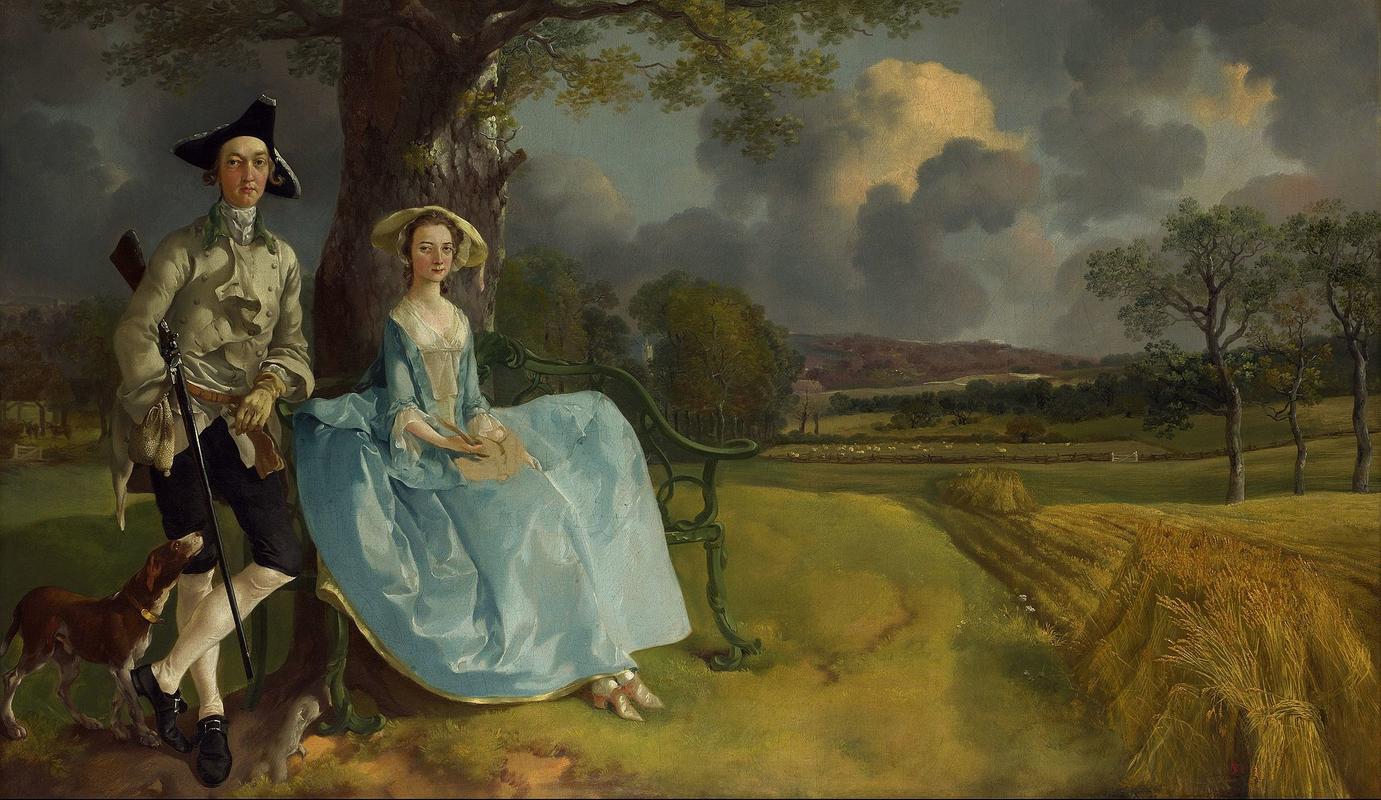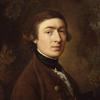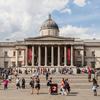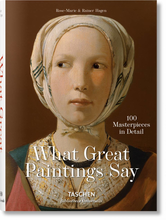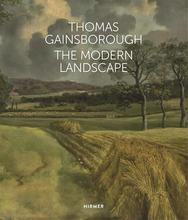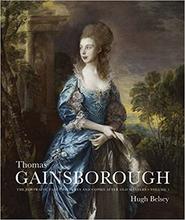More about Mr and Mrs Andrews
- All
- Info
- Shop

Contributor
Lifestyles of the rich and famous! In the mid-1700’s that meant having land and lots of it.
You flexed on people not by flaunting your diamond studded watch or rock solid abs, but by showing them how much green you had behind your fence. In this painting, named after the married couple, Mr. and Mrs. Andrews pose for a portrait painted by Thomas Gainsborough in an effort to get "likes" on 18th century Instagram. Because Mr. and Mrs. Andrews look like they’re about to drop the hottest mixtape of 1750.
Mr. and Mrs. Andrews has two stories behind it’s creation, and you get to decide which one you think is closest to the real thing. On the one side, it’s a painting commissioned by a newlywed couple to commemorate the beginning of their family and to celebrate their land. But on the other, this painting might be the very first unsolicited dick pic ever received. By the end of this, you won’t know what’s fact or fiction. No one likely ever will. But that’s what makes it fun.
Let’s start with the facts. The known knowns, if you will. Robert and Frances Andrews were two newlyweds whose marriage pleased both of their respective families as they both came from a landowning background. They commissioned a portrait to be painted by Thomas Gainsborough. It’s a scene that both introduces you to them as a family, and provides you with a sample of what living on their land feels like. It’s one of Gainsborough’s best works, but it wasn’t shared with the public until the 1960s, two centuries after it was painted.
On the surface, before you dig deep into the possibilities, it’s a very beautiful painting. It could be split into two if you drew a line down the middle. On the left would be the newlywed couple posing for their portrait, and on the right would be a stunning landscape painting. Gainsborough really went in on this one. But there’s a lot lying just under the surface that leads many to believe that Gainsborough was trying to troll the Andrews family.
Something that sets this this painting apart from others of the “conversation piece” variety of the time, is that the Andrews are looking at the viewer. Normally, conversation pieces have groups active in a scene, like people eating food or playing a game. Maybe even dancing. The Andrews aren’t doing any of those things. They’re posing like it's a normal portrait. But they don’t look like a happy couple. They look like they’re about to beat you up for stepping onto their property. It could be that Gainsborousgh painted them like that to illustrate that their relationship wasn’t as chipper as it would seem.
The real drama comes when you start to look everywhere but their faces. Looking unhappy is one thing, but it looks like Gainsborough was really trying to say something about these two. James Hamilton, the author of a book about Gainsborough and this painting in particular, seems to think that this painting has a lot of phallic symbols hidden in plain view. There’s also a couple jabs at the Andrews in here if you understand 18th century sarcasm. There’s two donkeys in an enclosure behind and to the left of Mr. Andrews. This could be seen as a metaphor for the newlyweds through Gainsborough’s eyes. A donkey is also known as an ass and, if you didn’t know, that’s not a compliment. Then there’s the shape and size of Mr. Andrews' bag attached to his waist. It’s shaped oddly, a bit like a particular piece of male anatomy if you know what I mean. And it’s placement so near Mr. Andrews actual anatomy is also of note.
The wildest part of this theory that Gainsborough is throwing shade is the gray area on Mrs. Andrews' lap. It may not look like much at first glance. A lady can’t have a gray circle on her beautiful blue dress? But in actuality it’s an unfinished portion of the painting. That’s kind of odd when you take into account how this was a commission by a wealthy family, and the rest of the painting is an absolute artistic flex on Gainsborough’s part. Art aficionados have long debated on what this spot was meant to contain, with many believing that it was where Gainsborough was going to place a baby, the ultimate signal of familial wealth.
Maybe, though, Gainsborough wanted your eyes to wander to that spot. Everything else is taken care of with the most acute attention to detail, and then right there on Mrs. Andrews' lap is absolutely nothing or, as Hamilton suggests, a penis. Yeah, that’s right. If you look really closely and squint your eyes a bit, you can see what could be considered a sketched out penis in that gray circle of Mrs. Andrews' dress. If that is in fact what it is, it might just be the first unsolicited dick pic in all of history. And it would explain why this awkward portrait didn’t see the light of day until just 60 years ago.
You might be wondering why Gainsborough would do such a thing. Why would someone waste so much talent to draw something so disgusting, so vile?! The short answer is, we have absolutely no idea. But trying to come to a conclusion is so much fun. Maybe Gainsborough was excited to paint this portrait, but had a falling out with Mr. Andrews midway through and decided to troll him instead of finishing the painting. Maybe he never liked the Andrews family and took this commission to mess with them. Maybe he just really liked penises. We simply don’t know. But since it took so long for the world to see this painting, something must have happened to have kept it locked away for so long. Until we find out—if we find out—at least we’ll have our theories.
Sources
- Furness, Hannah “Gainsborough masterpiece contains phallic symbols in work of secret revenge, expert claims.” The Telegraph. October 10, 2017. https://www.telegraph.co.uk/news/2017/10/10/gainsborough-masterpiece-co…
- Hughes, Kathryn. “Gainsborough by James Hamilton review – the painter’s secret sauciness.” The Guardian. August 17, 2017. https://www.theguardian.com/books/2017/aug/17/gainsborough-james-hamilt…
- The Art Story. “Artworks by Thomas Gainsborough.” Accessed September 22, 2019. https://www.theartstory.org/artist/gainsborough-thomas/artworks/
Featured Content
Here is what Wikipedia says about Mr and Mrs Andrews
Mr and Mrs Andrews is an oil on canvas portrait of about 1750 by Thomas Gainsborough, now in the National Gallery, London. Today it is one of his most famous works, but it remained in the family of the sitters until 1960 and was very little known before it appeared in an exhibition in Ipswich in 1927, after which it was regularly requested for other exhibitions in Britain and abroad, and praised by critics for its charm and freshness. By the post-war years its iconic status was established, and it was one of four paintings chosen to represent British art in an exhibition in Paris celebrating the Coronation of Queen Elizabeth II in 1953. Soon the painting began to receive hostile scrutiny as a paradigm of the paternalist and capitalist society of 18th-century England, but it remains a firm popular favourite.
The work is an unusual combination of two common types of painting of the period: a double portrait, here of a recently married couple, Robert and Frances Andrews, as well as a landscape view of the English countryside. Gainsborough's work mainly consisted of these two different genres, but their striking combination side-by-side in this extended horizontal format is unique in Gainsborough's oeuvre, and extremely rare for other painters. Conversation piece was the term for a group portrait that contained other elements and activities, but these normally showed more figures, seen engaged in some activity or in an interior, rather than a landscape empty of people.
Gainsborough was later famously given to complaining that well-paid portrait work kept him away from his true love of landscape painting, and his interest probably combined with that of his clients, a couple from two families whose main income was probably not from landowning, to make – more prominently than was normal in a portrait – a display of the country estate that had formed part of Mrs Andrews' dowry.
Check out the full Wikipedia article about Mr and Mrs Andrews

